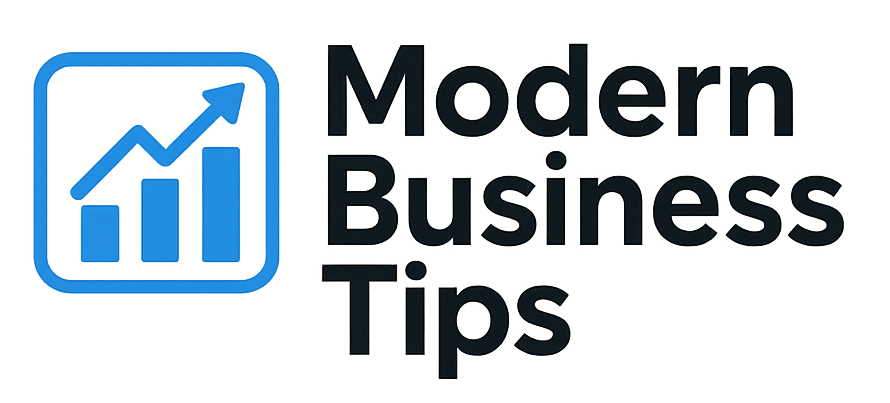Ever thought about how much your old tech stack is costing you? In today’s world, updating your tech can make your business more efficient and profitable. Not doing so could harm your future.
When we talk about tech stack optimization, small changes can make a big difference. They can cut down on costs and improve how users interact with your business. Many companies don’t realize how much better they could be with the right software and digital changes.
In this article, I want to share important tips. These will help you improve your tech stack and keep your business growing. It’s all about making small changes that add up to big improvements.
Key Takeaways
- Regular evaluation of your tech stack can reveal hidden costs.
- Adapting to new technologies can enhance user experience.
- Software development practices contribute to operational efficiency.
- Digital transformation is key to staying competitive.
- Investing in the right tools can streamline business processes.
Understanding Tech Stack Optimization
Tech stack optimization is about making the best use of technologies and tools in an organization. It looks at front-end, back-end, database management, and cloud computing. This process helps companies work better and perform at their highest level.
What is Tech Stack Optimization?
It’s about checking and improving the software and tools used in business. The goal is to make processes smoother, cut down on waste, and get systems to work together better. By doing this, businesses can save money and work more efficiently.
Why It Matters for Your Business
Optimizing your tech stack is very important. It lets companies quickly respond to market changes and stay ahead. By updating their IT, businesses can work better, save money, and grow in a fast-changing tech world.
Common Signs Your Tech Stack Needs an Upgrade
Knowing when to upgrade your tech stack can save a lot of time and money. High operational costs often mean your systems are not working well. For example, if you face frequent downtimes or slow processing, it might be a sign of deeper issues.
Workflow inefficiencies also show up when tools don’t work together well. This can make tasks harder and reduce productivity. It’s important to notice these signs to improve your tech setup.
High Operational Costs
High operational costs can mean your tech is not efficient. You might spend a lot on maintenance, repairs, or manual work. Tracking these costs helps you see where you can improve.
Inefficiencies in Workflow
When tools don’t meet team needs, workflow gets slow. Tasks take longer, and everyone gets frustrated. Fixing these issues can make your work smoother and more productive.
Outdated Tools and Technologies
Using old technologies can hold you back. Tools that don’t meet today’s needs can’t keep up with the market. Keeping your tech stack current helps you stay competitive and adaptable.
Key Components of a Successful Tech Stack
A successful tech stack has many important parts that work together. They make sure things run smoothly and efficiently. Knowing about front-end, back-end, and database management helps us see how they fit together.
Front-End Technologies
Front-end technologies deal with the part of apps that users see and use. They include HTML, CSS, and JavaScript frameworks like React or Angular. These tools greatly affect how users feel and stay engaged.
Back-End Technologies
Back-end technologies handle the parts of apps that users don’t see. They manage server, app, and database interactions. Languages like Python, Ruby, and Node.js are used here. Choosing the right back-end tech makes apps fast and reliable.
Database Management
Good database management keeps data safe and fast to access. Systems like MySQL, PostgreSQL, and MongoDB store data well. They make sure info is always there when needed.
| Component | Functionality | Examples |
|---|---|---|
| Front-End Technologies | User interface creation and enhancement | HTML, CSS, JavaScript, React |
| Back-End Technologies | Server-side management and data processing | Python, Ruby, Node.js |
| Database Management | Data organization and retrieval | MySQL, PostgreSQL, MongoDB |
Evaluating Your Current Tech Stack
To make your tech stack better, you need to evaluate it carefully. Start with a detailed needs assessment. This helps match your technology with your business goals. It shows what tools you really need and what’s holding you back.
Conducting a Needs Assessment
A needs assessment is a detailed way to see what your business needs. It shows which technologies are essential and which ones are not needed anymore. Keeping old or unused tech can waste resources.
Identifying Redundant Tools
After the needs assessment, find out which tools are not needed. Many companies use too many tools for the same job. Getting rid of these can save time and money. It makes work more efficient and easier.
Assessing Integration Capabilities
Lastly, check how well your tools work together. A tech stack that doesn’t integrate well can slow things down. Good integration means teams can work better together.
Cost-Effective Tools for Optimization
In today’s fast-changing tech world, finding affordable tools is key. Many companies have tight budgets but want to work smarter and faster. By looking at open-source options and SaaS alternatives, they can improve their work without spending a lot.
Popular Open-Source Solutions
Open-source tools save money and let you change them to fit your needs. For example, Apache Kafka helps with data in real-time, and WordPress is great for managing content. These tools get better thanks to a big community of users.
SaaS Alternatives to Consider
For those who need to grow without a big upfront cost, SaaS is a good choice. Salesforce helps with customer relationships, and Slack makes talking easier. These services save on upkeep and offer flexible pricing that fits your business size.
Emerging Technologies
Keeping up with new tech can lead to big improvements. Tools like AI and automation can make your business more efficient. Adding these to your tech stack can make your work better and keep you competitive.
The Role of Cloud Computing in Tech Stack Optimization
In today’s fast-changing business world, cloud computing is key for optimizing tech stacks. By using cloud solutions, companies can get the most out of their tech investments. This method makes operations smoother and helps adapt to market changes.
Benefits of Cloud Solutions
Cloud solutions bring many benefits for businesses wanting to improve their tech stack. Some main advantages are:
- Scalability: Companies can adjust their resources as needed.
- Cost Reduction: It saves money by reducing the need for big on-premises setups.
- Collaboration: Teams can work together in real-time from anywhere, boosting productivity.
- Integration: Cloud solutions make it easier to link existing tools with new ones, creating smooth workflows.
Key Providers to Look Into
When looking at cloud computing for tech stack optimization, it’s important to check out top providers that fit your business needs:
| Provider | Key Features | Best For |
|---|---|---|
| Amazon Web Services (AWS) | Comprehensive services, massive scalability | Large enterprises with diverse needs |
| Microsoft Azure | Seamless integration with Microsoft products | Companies using Microsoft tools |
| Google Cloud Platform | Advanced data analytics, AI capabilities | Data-driven organizations |
Building a Scalable Tech Stack
In today’s fast-paced world, having a scalable tech stack is key for any business. It helps them grow and adapt to market changes easily. A scalable tech stack lets businesses handle more work without losing performance.
Importance of Scalability
Scalability is important because it lets businesses grow without being held back by old tech. They can quickly add more infrastructure, apps, and services. This way, they can meet new challenges and opportunities. A good scalable tech stack also makes sure resources are used well and downtime is kept low.
Strategies for Future Growth
To grow well, businesses need good strategies. Here are some ways to do it:
- Select modular tools that make it easy to add or change things as needed.
- Leverage APIs to connect different parts of the tech stack smoothly.
- Prioritize cloud services for scaling apps and storage based on use.
- Employ agile methodologies to keep development flexible and quick to change.
Integrating Automated Solutions
Adding automated solutions to a tech stack can change how things work. The right way to automate makes things run smoother. This means companies can work better with less effort. Automation does more than save time; it also makes things more accurate and makes workers happier.
Benefits of Automation
Automation makes tasks more efficient. It cuts down on mistakes, saving money. Workers can then focus on creative tasks. The main benefits are:
- More productivity with less manual work.
- Consistent results from automated processes.
- More time for strategic planning.
Tools to Streamline Processes
There are many tools to help automate workflows. For example, Zapier and Automate.io link apps for easy data transfer. These tools are key to making operations better. Some top choices are:
- Zapier – Connects many apps to automate tasks without coding.
- Automate.io – Makes integrating cloud apps easy for better efficiency.
- Automation features in SaaS platforms like Salesforce and Slack.
Using these tools makes work easier and more productive. By adding them to my workflow, I have more time for creative ideas and innovation.
The Impact of User Experience on Tech Stack Efficiency
User experience is key to a tech stack’s success. Investing in better interface design makes systems easier to use. This leads to less frustration and more productivity.
An effective interface design makes interactions smoother. It also lets users get the most out of their tools.
Enhancing User Interface Design
Good interface design is vital for a great user experience. A well-designed interface lets users do their tasks easily. I’ve seen that clear menus, nice layouts, and responsive elements make for a better experience.
Important aspects of interface design include:
- Consistency: Uniform design elements make the platform feel familiar.
- Clarity: Easy-to-understand buttons and icons boost user confidence.
- Feedback: Quick feedback confirms that tasks are done right.
Ensuring Accessibility
Accessibility is a must for user experience. It makes sure everyone can use the technology. By focusing on accessibility, businesses can reach more people and be more inclusive.
Accessible design means:
- Keyboard Navigation: Users can move around without a mouse.
- Text Alternatives: Descriptive text for images helps those with visual impairments.
- Color Contrast: Enough contrast between text and background helps users with visual disabilities.
Real-World Examples of Successful Optimization
Looking at real-world examples shows how optimization can change businesses. Each story gives us unique insights and results. It shows how important it is to have a tech stack that fits your needs.
Case Study: A Retail Business
A big retail business grew a lot after updating its tech stack. They added a new e-commerce platform, better inventory management, and customer relationship tools. This led to a 30% sales boost in just six months.
This shows how a good tech stack can make things run smoother. It also helps improve how you connect with customers, leading to big wins.
Case Study: A Startup
Now, let’s look at a startup that had trouble with team communication. They fixed this by simplifying their tech tools. This made their work faster and their products come to market quicker.
This story highlights how a well-organized tech environment is key. It helps startups innovate and grow quickly.
Best Practices for Continuous Optimization
Embracing continuous optimization is key to improving my tech stack’s performance. Regular reviews help spot outdated tools and make improvements. Keeping up with industry trends reveals the newest advancements to adopt, keeping my strategies sharp.
Regularly Reviewing Your Stack
Regularly reviewing my tech stack is a smart move. It lets me check if tools are working well, listen to user feedback, and find areas to get better. This ensures my resources match my goals, leading to innovation.
Staying Updated on Industry Trends
Staying current with industry trends is vital for continuous optimization. Following new developments helps me adopt best practices that boost my operations. This way, my business stays agile and responsive to market changes.
Conclusion: Invest in Your Tech Stack Today
Looking ahead, I see big benefits from investing in my tech stack now. These benefits include saving money, working more efficiently, and making users happier. By focusing on tech stack optimization, I can help my organization grow and meet market needs.
The Long-Term Benefits
Choosing to optimize my tech stack opens up new opportunities for my team. Using the latest tools and technologies makes our work smoother and lets us meet customer needs faster. This approach can change how we work, making our business stronger and more competitive.
Taking Action on Your Optimization Strategy
It’s important to act on my tech stack strategy to succeed. I need to check my tools, follow best practices, and keep up with new tech. By doing this, I can keep my organization ahead and make the most of our tech investments.



